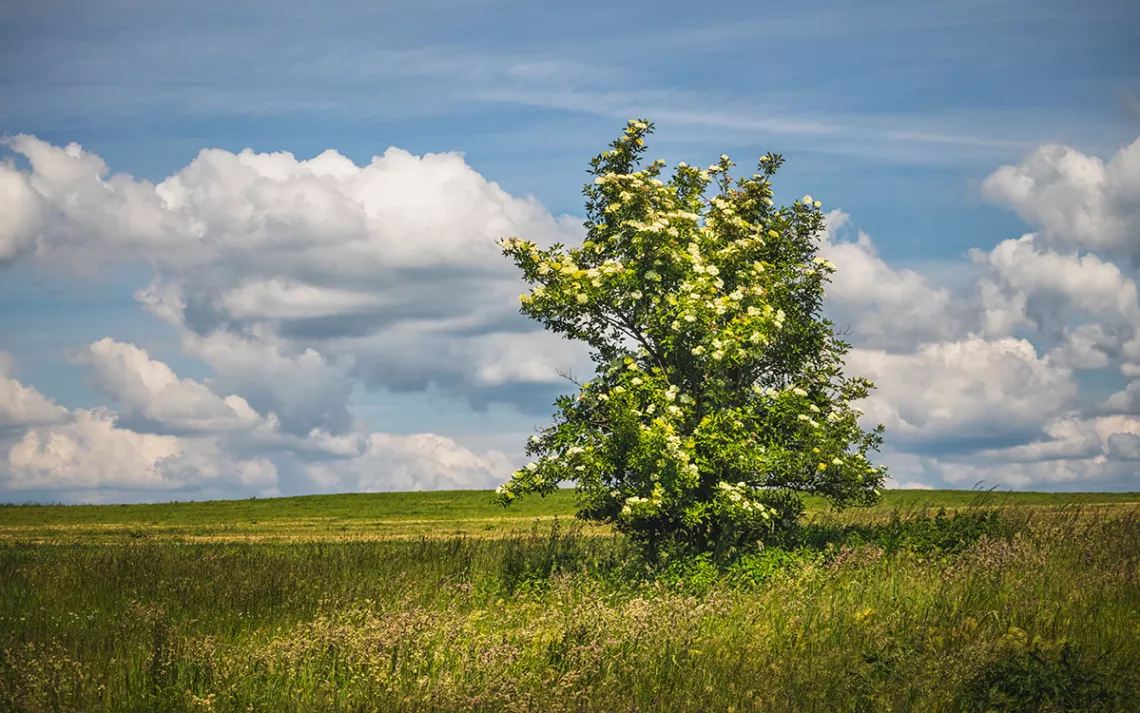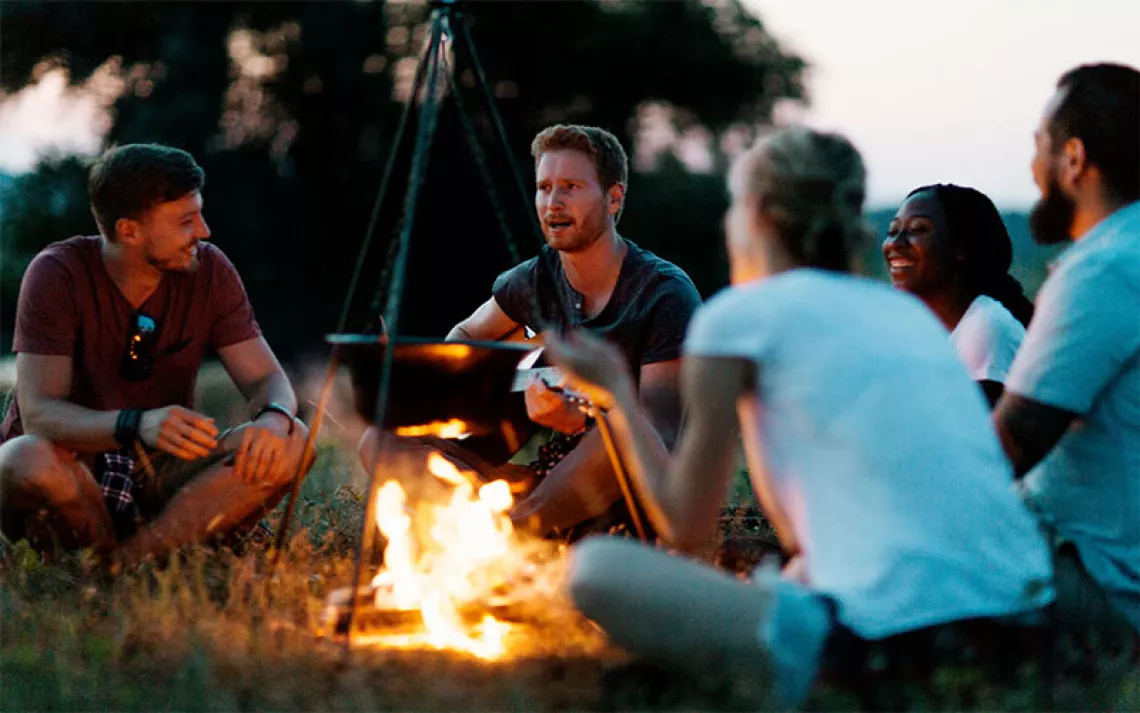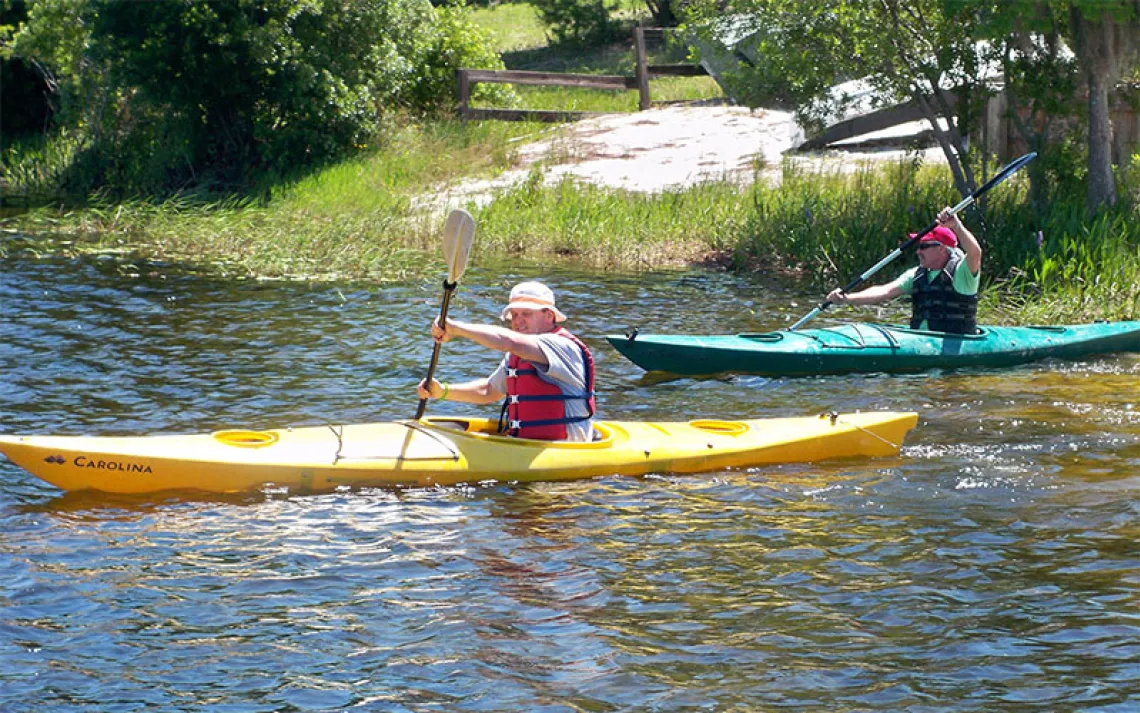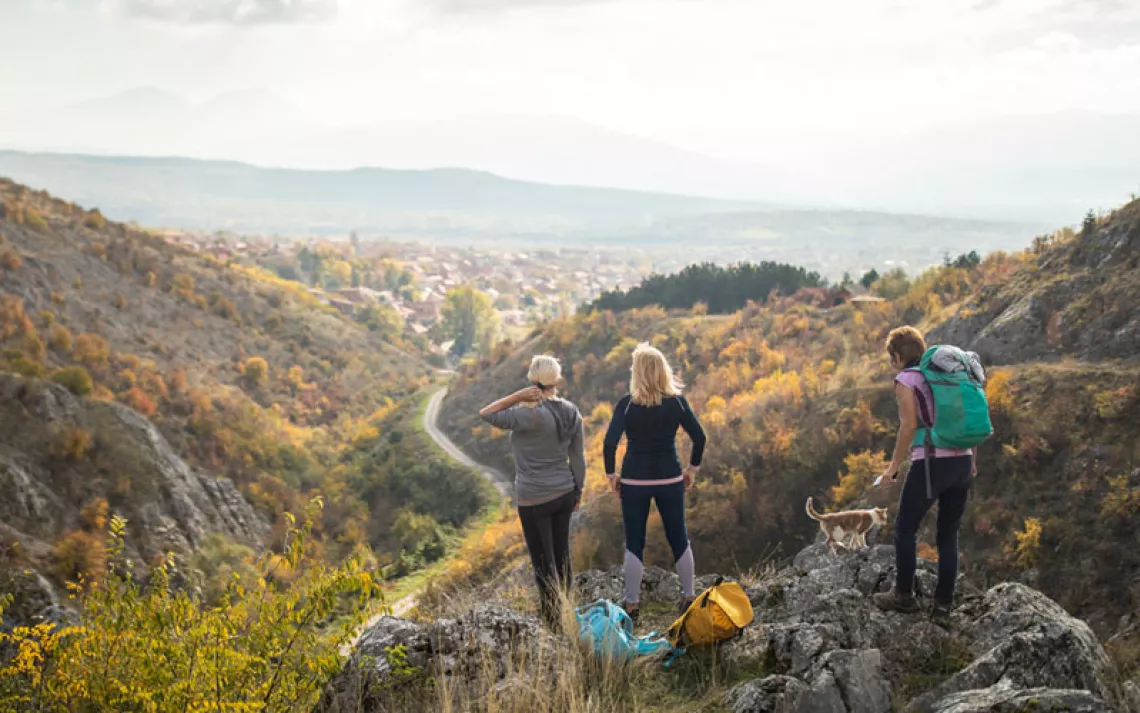Talking to Plants Changed My Life
I also thought it sounded weird—until I learned to let go and give it a try

An elder tree was among the first plants to give Lucy Sheriff guidance during a difficult period of life. | Photo by Roman Kybus/iStock
I crouched down close to the dirt and looked around to see if anyone could overhear what I was about to say. I already felt foolish and flustered, and I didn’t want witnesses.
“Hello,” I whispered to the plant in front of me. I was met with silence. I’d been told the plant was supposed to talk back to me, but to be honest, I wasn’t quite sure how this whole process worked. I tried again, louder, trying not to care if anyone heard me. “Hello, my name is Lucy. It’s nice to meet you,” I said with more resolve.
The plant I was attempting to befriend was a stinging nettle, Urtica dioica. It was a magnificent specimen as nettles go: a thick, woody stem, heavily laden with voluptuous seed clusters that shot upward and swayed gently in the wind. Its bushy leaves with serrated margins fanned out to the sides and splayed backwards over themselves, as if in mid-shrug. The plant looked relaxed, but still yielded no answers. I laughed out loud at myself and stood up. Oh well, I thought, I tried.
Last year, I took an online course to study sacred plant medicine. It was completely out of character for me, a cynical, disillusioned environmental journalist who had never even lit a stick of incense until I moved to Los Angeles. The past two years have been the most stressful period of my life. My dad died after a gut-wrenching, horrific battle with brain cancer. I had a cancer scare myself. And I was struggling to be a stepmom to two kids. As a result, my skin exploded into a fiery, angry rage of severe eczema, which got so bad I didn’t want to leave the house—I looked like I had leprosy. I was depressed, miserable, and constantly anxious. I felt I was being pushed to the breaking point, and I was desperate to try something new.
I had become increasingly interested in spirituality since moving to LA—meditating more, journaling, analyzing my dreams—and in that vein eventually I stumbled across an online mentorship course called Sacred Plant Medicine. The teacher, Carole Guyett, is a highly respected Celtic medicine woman and herbalist who trains apprentices at her clinic in Galway, Ireland, and she's my mum’s childhood friend.
The course offered to help facilitate communication with plants, and guidance on how to use them to heal both physical and emotional ailments. Could these plants help me heal where steroid creams, therapists, and Western medicine had failed? It was definitely out of my wheelhouse, but—for once—I followed my gut. I applied and was accepted. And so began 12 months of learning to speak to plants.
It took me suspending every ounce of disbelief to engage. At the beginning, I was constantly torn between feeling skeptical and desperately wanting to believe that plants really could help me get better, if I only knew how to ask.
I’m not the only one on a journey to better understand the intelligence of plants and the relationships humans can have with them. Mycologist and fungi entrepreneur Paul Stamets has helped popularize mycelium—the rootlike network of fungi, which transports nutrients and messages underground. Scientists and entrepreneurs are now using mycelium to break down toxic waste and to create clothing, packaging, and even building materials. With his book Desires of Botany, journalist Michael Pollan opened up a new conversation about how people and domesticated plants form reciprocal relationships, not to mention his exploration of how plants shift our consciousness in This Is Your Mind on Plants. Peter Wohlleben, a German forest scientist and author of The Hidden Life of Trees, has brought to the mainstream new findings on the intelligence of trees and how they communicate—as has Suzanne Simard, a Canadian scientist and author of Finding the Mother Tree, a book about interconnected tree communities. And the growing trend of ayahuasca retreats shows that there’s an increasing number of people interested in communicating with plant life in order to promote healing.
I found myself entering the plant world through Carole’s varied assignments. Her first lesson for me was to learn how plants could help heal the body through teas, tinctures, and salves. Next, I was to familiarize myself with Celtic pagan traditions, and how to use plants in ceremony. And finally, I would practice actually communicating with them. This was the most challenging part. Yes, I dabbled in the LA brand of spirituality, but this seemed like a big leap. I had tried crouching down and engaging in conversation with a stinging nettle, and I had been met by silence. I had to dig deeper, truly suspend my disbelief, and trust in the unknown.
Finally, during one guided meditation, I made the leap that my brain had been fighting so hard to resist. Bypassing space, time, and what I thought was possible, I found myself in the plant realm, communicating with an elder tree. I began the meditation sitting crossed-legged on my bed with a cup of elder tea steeping. I listened to a track Carole provided, and duly imbibed the tea, as the recording filled my ears with the sound of drumming. I closed my eyes, and Carole’s voice began to take me on a journey. Destination: meeting the spirit of the elder tree. But as her voice told me to envision walking down stone steps to an underground cavern, my mind kept snapping back to the present, the pins and needles in my legs, and the feel of my bed underneath me.
I relaxed my body, and stopped trying to make something happen. It doesn’t matter if nothing happens; you’re relaxed and that feels good, I told myself repeatedly. This time, Carole’s voice guided me to stand in front of a large elder tree, and all of a sudden, my mind slipped away. I was no longer aware of being in my room. I was no longer aware of meditating. My cynical running commentary vanished, although the drumbeat stayed with me. I stood inside the trunk of a large elder tree, looking up, surrounded by branches bare of any leaves. The entire scene was a deep, dark purple, apart from the sky, whose billions of stars flashed a psychedelic bright, pure white. I felt a rush of energy, as if one of the elder tree’s branches had plugged into my heart.
It felt extremely uncomfortable, and my left arm began to jolt violently, but I stayed with the sensations. I began asking the tree questions, ranging from the existential to the practical: Are we going to be OK if Dad dies? The answer came back immediately, as though it were from some higher intelligence than mine. “Your family will be forever changed, but you will pass through the pain.” “What do I need to do to clear my eczema?” I asked next. Another swift reply: “You need to set boundaries. You need to find your voice and learn to say no.”
Carole’s voice reemerged from the drumbeat, telling me to return to my physical body. I opened my eyes. It felt as if two hours had passed by, but it had been less than 15 minutes. I had experienced something psychedelic, and yet I hadn’t taken anything that would have caused me to hallucinate. Did I just ... speak to a plant?!
Even after this experience, it took time for me to truly trust the process. I would microdose psilocybin to help get over the cognitive barrier—that thought of “this can’t be real; I can’t speak to plants.” Each time I microdosed, the doubt would slip away, my mind would quiet down, and I’d be free to communicate with the plant world. My cynicism fell away, and my confidence grew. These days I can slip in and out of speaking with plants without psilocybin, and I’ve had some wonderful meditations with nettle.
As for my health, I put into action everything the elder tree—and many of the other plants I worked with—told me. The eczema, which was concentrated around my mouth, slowly began to heal as I found my voice and spoke up about my needs. I put myself first, prioritizing my health.
My perspective on the world has also shifted, and I appreciate the natural world in a way I never have before. Now, when I hike, I stop and take a moment before stepping foot on the trail to connect with my surroundings, to ask permission to enter, to introduce myself. My relationship with plants has led me to appreciate place in an entirely new way. I notice the trees along the road, the weeds growing through the cracks in the sidewalk, the battered old oak that has lived through many presidents and multiple wars. I see where I live through different eyes. I live my life through a different set of values, and I respect my surroundings through a new lens.
It has also, surprisingly, helped me with my work as a journalist who covers Indigenous communities—who have been connecting with plants and honoring the land for millennia. On a recent assignment in Hawaiʻi, I interviewed Native Hawaiʻians, whose sacred land has been stripped from them by Anglo colonizers and turned into resort complexes. When they spoke to me about communing with their homelands, and feeling the pain of the earth being stripped of its resources, I could better empathize. I sat in kilo with them—the practice of introducing oneself to a place before you enter it—rather than watching the ritual as a passive bystander.
Talking to plants is not only soothing but also humbling. They’ve been around far longer than us, and they’ll continue to be here long after we are gone—there’s a lot of intelligence they have to share with us. Whether you decide to take me seriously, or just consider me crazy, next time you’re walking past a line of trees, or a bush of stinging nettles, why don’t you stop for a moment, take a few deep breaths, and see how being in their presence makes you feel. What have you got to lose?
 The Magazine of The Sierra Club
The Magazine of The Sierra Club



